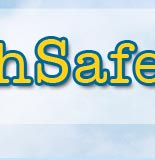|
- Report Card for Principals
- Create a Vision for Change to Provide Inspiring and Effective
Leadership
- Become Familiar with Any Relevant State Laws and School
District Regulations on School Violence
- Move Toward a “Gold Standard of Care”: Guidelines for Principals
and School Superintendents
- Choose Evidence-Based Interventions
|
CONSIDER THE CHALLENGES FACING PRINCIPALS |
- Across the U.S. some 4 to 6 million students are at “high-risk” for developing aggressive and antisocial behaviors.
- In the U.S. 2.7 million violent crimes are committed at or near schools annually.
- Forty percent (40 %) of high school students report having been involved in a physical fight; 33 % have had property stolen or been vandalized at school; 8 % carry weapons to school; 7% have been threatened or injured with a weapon at school; 4% report having stayed home away from school with fear of becoming victimized at school.
- Eleven percent (11%) of teachers experience victimization by students. This translates into some 183,000 instances of teacher victimization from 1999 through 2003.
- In 1999-2000 about 54 % of public schools took at least one serious disciplinary action against a student, accounting for about 1,163,000 actions.
- Longitudinal studies show that children with such aggressive behavior and conduct problems persist in a significant percentage of cases. For example, researchers have found that approximately 45% of school-aged children with conduct disorders will evidence similar problems four years later. Note this also means that some 50% of initially identified conduct disorder students will improve over time, no longer showing signs of aggressive antisocial behaviors.
- Those who persist in childhood aggression are more likely to develop subsequent substance abuse, delinquency, school failures, date violence, adult maladjustment, employment difficulties, marital dysfunction and spouse abuse.
|
What can principals and schools, in partnership with others, do to influence the developmental trajectory of aggressive students? This section of the website is designed to assist Principals and Teachers in the use of evidence-based interventions to help students feel safe in school. We begin with a set of guidelines, in the form of a Principal’s Report Card, to foster a consideration of the “awesome” responsibilities principals must meet. |
| II A. REPORT CARD FOR PRINCIPALS |
“The success of a bullying prevention program and other violence prevention programs depends on the commitment, understanding and actions of the principal. The principal sets the school’s tone and ultimately provides the time, resources and opportunities for the implementation and evaluation of the interventions”
(Canadian Initiative to Prevent Bullying website http:/www.cipb.ca.) |
|
The key to any violence prevention program is the Principal. There are approximately 114,000 principals in the U.S. How good a job are these principals doing in demonstrating leadership and creating a vision of a violence-free school? The following checklist provides an illustrative list of possible criteria to evaluate principals and to have principals self-evaluate themselves. This list is NOT exhaustive. This section of the TSS website on Bullying is designed to provide information about how each of these various checklist items can be achieved.
- Demonstrate Leadership.
- Collaboratively create a vision of a violence-free school.
- Model collaborative problem-solving.
- Create an inviting and safe learning environment for students, staff and parents. Alter teacher supervisory behaviors.
- Conduct a needs assessment of the school safety and assess for bullying behaviors.
- Disseminate information about state and district policies relevant to violence. Post school-wide policies against bullying and harassment.
- Initiate an early identification screening program with accompanying intervention programs that are regularly evaluated.
- Obtain information about evidence-based programs that can be conducted at the school-wide level, with targeted students, and with chronic offenders.
- Create a team of “Champions for Student Safety” or some other group who are designated to provide leadership.
- Actively support professional staff training and establish a confidential reporting system of bullying behavior.
- Roam in the school building and be perceived as supportive and inviting.
- Actively seek parent involvement and establish procedures to respond to parents of children who bully and who are victims of bullies.
- Actively engage community members and establish referral services for children and families in need.
- Prepare for possible crises/disasters .
Let us now consider how principals can achieve each of these activities.
|
II B. CREATE A VISION FOR CHANGE TO PROVIDE INSPIRING AND EFFECTIVE LEADERSHIP |
Vision and Leadership
| “There is no more powerful engine driving an organization toward excellence and long-range success than an attractive, worthwhile and achievable vision of the future, widely shared.” (Nanus, 1992, p. 3.) |
“The research on school climate suggests that the principal is the single most important person to have involved in school violence-reduction programs. Researchers have consistently reported that principal’s leadership and vision predict the degree to which the staff is able to effect needed reform, particularly in discipline matters.” (Hoover & Oliver, 1996, p. 38.) |
Ways principals can inspire and provide effective leadership:
- Be an effective role model of those behaviors he/she would like to see the school staff and students demonstrate.
- Challenge staff to share your vision of a violence-free school. Ask staff to discuss the nature and level of violence, bullying and harassment in your school. Have them fill out Assessment Measures on Bullying. (See III B3) Ask them to address such questions as:
“If there was no more violence or threats of violence in our school, what changes would we see?”
“In order to achieve the objective of violence-free schools, the steps we should take are….”
“Envision a school where students would refrain from picking on others, where bystanders
to bullying would intervene to help victims, where students and teachers used their skills
to deal with bullying effectively and where principals demonstrated the leadership and
passion to have these objectives come to be.”
- Help the staff to translate their responses into doable goal statements. (See II C)
- Create a collaborative team made up of potential agents of change and "Champions of Students." This group should include school staff, student leaders, parents and community members.
- Ensure that teachers are aware of school district policies, state laws, and school policies and procedures.
- Help staff to select intervention programs and evaluative procedures that are tailored to fit your school and community's needs. (See II E Choose Evidence-Based Interventions)
|
| II C. BECOME FAMILIAR WITH ANY RELEVANT STATE LAWS AND SCHOOL DISTRICT REGULATIONS ON SCHOOL VIOLENCE |
Prevention of bullying is becoming a legal obligation of the schools. Bullying prevention programs are a necessity for schools given their in loco parentis legal responsibilities.
- Prevention of bullying is becoming a legal obligation of the schools.
- Increasingly parents are seeking legal redress to the harassment of their children.
- “Many bullying and harassment behaviors are not just wrong, they are illegal and State Supreme Courts have held school officials responsible for not intervening to reduce bullying and sexual harassment.” (Shoop, 1994.)
- Severe school bullying that targets a victim specifically because of race/ethnicity or gender/sexual identity can be considered a hate crime.
Gale Morrison and her colleagues (2005) have observed that federal and state governments have initiated a procedure to identify “persistently dangerous” schools and, according to the federal No Child Left Behind Act (NCLB), states must develop and implement the Unsafe School Choice Option which allows students to transfer to a “safer” school if they attend “persistently dangerous schools.
There is some debate among educators as to how to define “persistently dangerous schools.” While some educators would limit the threshold to violent criminal offenses committed on school property, others would highlight:
- the occurrence of recurrent school discipline problems;
- instances of defying authority;
- physical altercations;
- gang presence;
- bullying and harassment.
Wherever administrators put the bar for defining “persistently dangerous schools,” the legal onus falls upon principals to ensure that they:
- are aware of their school districts’ policies;
- demonstrate that they have taken steps to prevent school violence;
- ensure that all students learn in an environment that is safe from threat of harm and harassment. See the website Stop Bullying Now for a list of state legislation guidelines (http://stopbullyingnow.hrsa.gov).
Another example of where state policies impact schools comes from the legislation on parent involvement. Seventeen states require parent involvement policies in schools. Fifteen states have legislated that employers allow time for parents to attend school meetings and activities (See http://www.ecs.org/clearinghouse/59/11/5911.pdf).
|
| II D. TOWARD A “GOLD STANDARD OF CARE”: GUIDELINES FOR PRINCIPALS AND SCHOOL SUPERINTENDENTS |
Imagine that you are a Principal or a School Superintendent going to be held accountable in court for the violence that occurred in your school. The lawyer for the aggrieved students’ and their parents may ask the administrators what they have done to protect students and reduce school violence. How many of the following questions would you feel comfortable answering?
LAWYER MIGHT ASK PRINCIPALS AND SCHOOL SUPERINTENDENT: |
- “Please tell us. Are you able to enumerate your school district’s and your state’s policies and laws concerning bullying and harassment?”
- “What did you do to assess for the incidence of bullying, harassment, and the presence of gangs in your school? (What specific assessment tools did you use?)”
- “What did you do to create an inviting school environment for students, staff and parents, so all students feel welcome and safe? What did you do explicitly to nurture diversity and tolerance in your school?”
- “How did you train your school staff to identify and intervene in bullying and harassment episodes, and monitor and evaluate their effectiveness?”
- “What empirically-based interventions did you decide to implement and evaluate at the primary (school-wide level), at the secondary level with “high-risk”students, and at the tertiary level using wrap-around services with students who evidence chronic behavioral problems?”
- “What did you do to identify “high-risk” students and what specific interventions did you provide on a preventative basis? How did you evaluate their effectiveness?”
- “What steps did you take to reduce gangs in your school?”
- “What other activities, if any, have you taken to reduce school violence?"
|
| II E. CHOOSING EVIDENCE-BASED INTERVENTIONS |
In discussing the implications of evidence-based interventions designed to reduce bullying, Orpinas and Horne (2006) provide three important reminders. |
“A bullying prevention program no matter how good it is can never replace the development of a
positive school climate.” (p. 169.)
“Short-term fragmented initiatives without teacher support and without a clear tie to the mission
of the school will likely prove ineffective.” (p. 169.)
“Short- term interventions produce short- term results; multi-year programs are needed to seed
and maintain improvements in social competence and school climate.” (p. 170.)
“The success of a bullying prevention program depends on the commitment, understanding and
actions of the leader of the organization. The leader sets the tone and ultimately provides the time,
resources and opportunities for the implementation and evaluation of the interventions.” |
|
A key aspect of the principal’s leadership is the need to be critically-minded and judicious in the selection of violence prevention programs. Consider that the School Resource Center, 2001, p.3 observed that:
“Of 380 youth violence prevention programs reviewed, only 23 (6%)
were found to show evidence of program effectiveness.”
|
|
| Similarly, two major researchers on school violence observed: |
“While knowledge is increasing about effective prevention and treatment
interventions for reducing childhood mental disorders and related problems,
the translation and application of these potentially valuable interventions to
widespread practice is quite limited.” (Tolan & Dodge, 2005, p. 605.)
|
To illustrate their point, they offer the example of the evaluation of drug use prevention programs conducted in schools. A survey of 1795 schools indicated that only 17% of the schools had implemented efficacious, evidence-based, peer interactive procedures. Many were using programs that had been found to be ineffective. (See Jimerson and Farley, 2006, for a Handbook on School Violence and School Safety that is designed to move from research to practice.) With these reminders in place, we can now consider the “state of the art” in reducing bullying and how to implement model programs. |
We begin with what the research literature shows does not work.
1. What does not work in reducing school bullying?
- Inflexible zero tolerance policies
- Grade retention or holding back students
- Suspensions and expulsions of students without school reentry plans or daytime supervision
(In-school suspension that ensures student’s participation plus counseling are more effective)
- Segregation of students with emotional and behavioral differences, grouping aggressive students together
- Unstructured counseling (individual and group)
2. What works in reducing school bullying?
- Comprehensive, multilevel, school-wide programs that involve all parties (principals, teachers, office staff,
cafeteria staff, bus drivers, students, parents, community members) and that establish a school climate
characterized by warm, positive interest in students with involvement and supervision by adults
- Programs that establish, implement and monitor school policies with firm limits, are non-punitive,
and use nonphysical consequences for unacceptable behavior and violation of clearly specified school rules
- Programs that improve classroom management
- Programs that emphasize the inclusion of all students while nurturing a sense of belonging and school-connectedness
- Programs that employ cognitive behavioral skills training and provide closely supervised bystander and peer interventions (e.g., peer counseling and peer teaching, and conflict-resolution interventions)
- Programs that provide adults who act as positive role models
For example, in the original Olweus Bullying Prevention Program in Norway, his analyses found:
- a 30% - 50% reduction of bullying problems over a two-year period.
- an accompanying reduction in students’ reports of general antisocial behavior such as vandalism and truancy.
- improvement in the school’s social climate.
- improvement of students’ satisfaction with school.
Six large scale evaluations over the last 20 years have yielded similar, but some what less substantial results
(10% - 30% reductions in bullying), depending upon the fidelity and comprehensiveness of the intervention program.
Various agencies have summarized lists of promising, effective model programs.
A beginning point is to visit these organizations’ websites that evaluate bullying prevention programs.
ACT- Adults and Children Together Against Violence Project
http://www.ACTAgainstViolence.org
American Federation of Teachers: Five Promising Discipline and Violence Prevention Programs
www.aft.org
Canadian Initiative for the Prevention of Bullying (CIPB)
http://www.cipb.ca
Center for the Study and Prevention of Violence, University of Colorado at Boulder
http://www.colorado.edu/cspv/blueprints
The Development Services Group: Model Programs Guide and Database
http://www.dsgonline.com
National Association of School Psychologists Exemplary Mental Health Programs
www.naspcenter.org
Substance Abuse and Mental Health Services Administration (SAMHSA)
The reviewed programs focus on a variety of risk behaviors such as bullying, aggression and drug abuse.
http://modelprograms.samhsa.gov/
U.S. Department of Education: Exploring the Nature and Prevention of Bullying
http://www.ed.gov/admins/lead/safety/training/bullying/index.html
U.S. Department of Education: Exemplary and Promising Safe, Disciplined and Drug-Free Schools Program
http://www.ed.gov/admins/lead/safety/exemplary01/exemplary01.pdf
Also see the list of websites on bullying that provide many additional resources.The following list of Bully Prevention Programs includes examples of intervention programs that have been found to reduce bullying (see list of websites.)
| Olweus Bullying Prevention Program |
Olweus, 1991,1993.2000 |
| Expect Respect |
Safe Place, 2001 |
| Bully Busters |
Guzman, 2001, Horne et al. 2003
Newman et al. 2000 |
| No Bullying Allowed Here |
Rock et al. 2005 |
| Bully-Proofing Your School |
Garrity et al., 2000; 2004 Stein et al. 1991 |
| Back off Bully Program |
Twemlow et al., 2001 |
| Targeting Bullying: An Ecological Approach |
Espelage & Swearer, 2004;
Swearer& Espelage, 2004 |
| Partners for Success Program |
Sessions et al. 2003 |
| Expect Respect Program |
Macklem, 2003 |
| University of Illinois School Bullying Program |
Espelage, 2004 |
Positive Discipline in Classrooms
|
Nelsen et al., 2000 |
Recess Program: Reprogramming
Environmental Contingencies for
Effective Social Skills Programs |
Walker et al., 1993 |
| Student Watch Program |
Maher, 1987 |
| Peer Support Model |
Cowie, 2000; Menesini et al., 2003 |
| Safe School Ambassadors Program |
Community Masters, 2003 |
| Steps To Respect |
Committee for Children, 2001 |
|
In addition to these ecological, school-wide intervention programs that are directed primarily at all students, there are evidence-based programs that focus on teaching social and self-control skills to selected groups of students. See the following websites:
Bully Proofing Your School (Carla Garrity, 303-743-3670)
http://www.sopriswest.com
PATHS- Promoting Alternative Thinking Strategies
(Mark Greenberg, 814-863-0241)
http://www.prevention.psu.edu/projects/PATHS.html
PEACEBUILDERS
(Kathleen Lackey, 1-877-423-2236)
http://www.peacebuilders.com
Resolving Conflict Creatively Program (RCCP)
(Linda Lantieri, 212-509-0022)
http://www.esrnational.org/about-rccp.html
Second Step: A Violence Prevention Curriculum
(The Committee for Children, 1-800-634-4449)
http://www.cfchildren.org/
Social Decision Making/Social Problem Solving Program
(Maurice Elias, 732-445-2444)
http://www.EQParenting.com;
http://www.EdParenting.com;
http://www.casel.org/home/index.php
Working it Out: Tools for Everyday Peacemakers
(Michael Buscemi 1-800-446-2700)
http://www.quest.edu/wio.htm
Additional Bully Prevention Programs such as Child Development Project, that is designed to create a caring learning community;
Don't Laugh at Me Program developed by Peter Yarrow of the folk group Peter, Paul and Mary, and Aggressors,
Victims and BystandersAVB program of Palm Beach County, Florida are described on the following website:
http://www.ed.gov/admins/lead/safety/training/bullying/index.html |
|
|
|
 |







